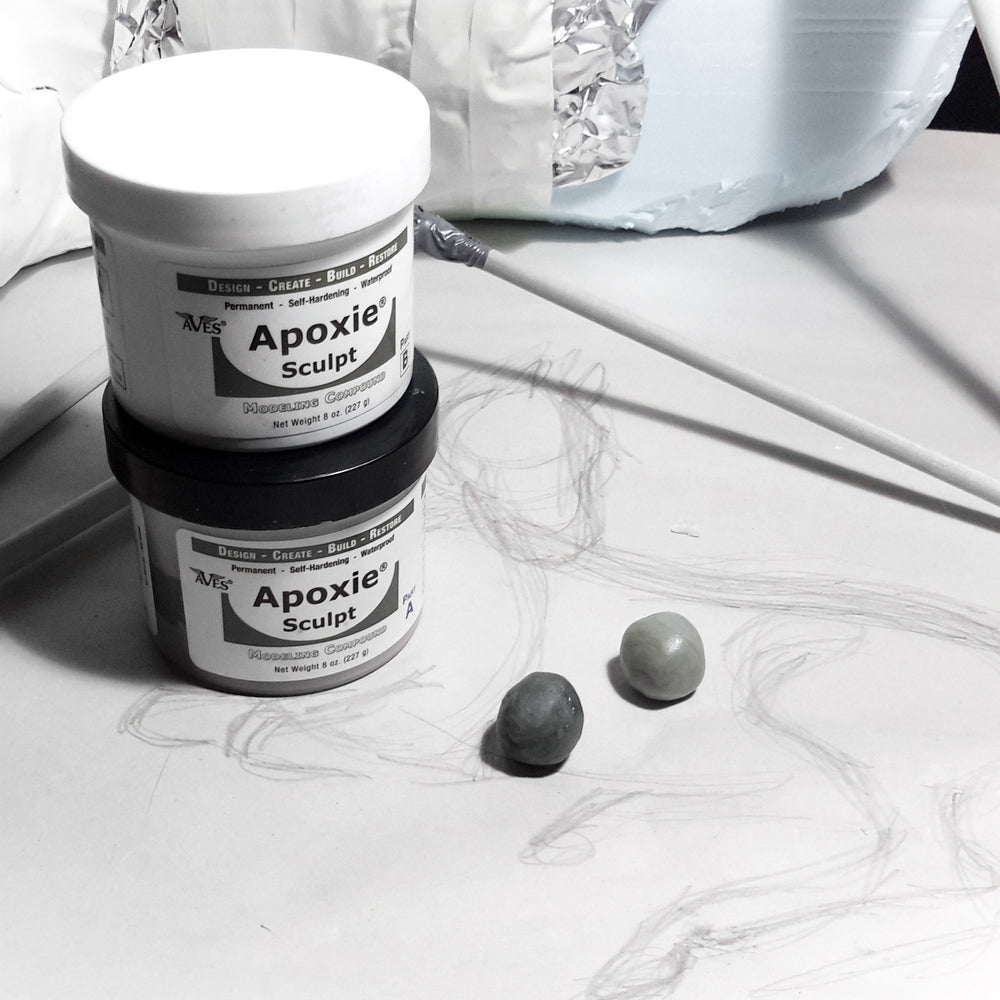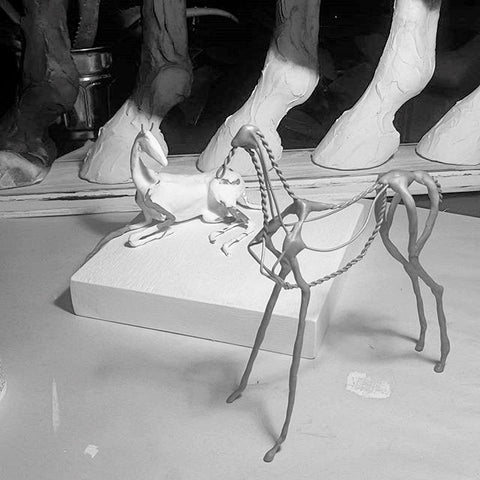
Disclosure: This post contains some affiliate links. I may earn a small commission at no extra cost to you, supporting my blog and content creation. Thank you!
---
Most of my sculptures are made using a combination of clays, depending on the task at hand. My usual air dry clay is Creative Paperclay, but I also often utilize an epoxy clay when I need a lot of extra strength. This review will focus on Apoxie Sculpt, but there are many different brands.
Epoxy clay is an air-dry, 2-part epoxy clay that dries very hard within 24 hours depending on the thickness. The consistency is clay-like, but it can droop a bit depending on the brand/type, and so should be supported by an armature or left to stiffen in order to hold certain shapes.
The Benefits of Epoxy Clay Include:
- Can be carved, sanded, and painted (also available a range of colours)
- Waterproof
- Doesn’t shrink when drying
- Adheres to most materials
- Available a variety of colors - I particularly like the black one
Epoxy clay is a valuable product that I use for specific applications, such as when I know part of the armature will be under strain, when I need things to hold together firmly, and sometimes when I work very thin and want to ensure that a fragile piece won't break.
Some artists construct entire sculptures from epoxy clays or related materials, resulting in robust, durable pieces. However, I prefer not to use it extensively for the following reasons:
Expense: Epoxy clays can be rather expensive, making them less practical for extensive use in large sculptures or when working on a tight budget.
Potential health effects: It has an epoxy base, and these chemicals are necessary for the hardening reaction to happen. It is listed as safe, but it is recommended to mix it with gloves on. The long term exposure to such clays has not really been studied. I may be overly cautious in this area, but it's something to keep in mind.
Putty-like feel: The texture of this clay is sticky and coats your fingers. In contrast, the high-quality air dry clays I use are water-based and feel like ceramic.
Limited working time - The clay hardens due to a chemical reaction, meaning there's no way to slow the drying time. You have about 2-4 hours (depending on the brand) before it starts to harden. Once you mix it, you will need to use it.
Long-term storage: Epoxy clay can age, and one part of the 2-part mixture may dry up or get crusty, rendering it unusable. Its shelf life is not indefinite and is shorter than that of Creative Paperclay, which I find more reliable for long-term use.
Weight - Dried epoxy clay is rock-hard, but it is also quite heavy. One of the things I like about Creative Paperclay is that it is quite lightweight, making it less brittle.
Semi-gloss finish - When dry, Apoxie Sculpt has a semi-gloss finish that doesn't take paints and primers as well as lightweight clays. This is similar to polymer clays, as the dried product is essentially a plastic, unlike a clay body. Fortunately, this one is minor as there are other options if you prefer a matte finish - such as Apoxie Clay.
Despite these downsides, epoxy clay is indispensable when constructing strong armatures, and I will continue to use it for its strength.

Apoxie Sculpt in action strengthening wire armatures
Other Epoxy Clay Options
There are many other options for epoxy 2-part sculpting clay. I've also been using Milliput, which I can easily buy at my local art store. It also comes in a smaller packaging, so I can always have a fresh batch. I have also used various plumbing putties from the hardware store, but the working time of those is typically less than a minute, so not really useful for sculpting.
Now that you have some basics, get out there and unleash your creativity! :)
What's Next?
Deciding on the right clay for your sculpture? Check out my comparison Epoxy vs Air Dry Clay for Sculpture

